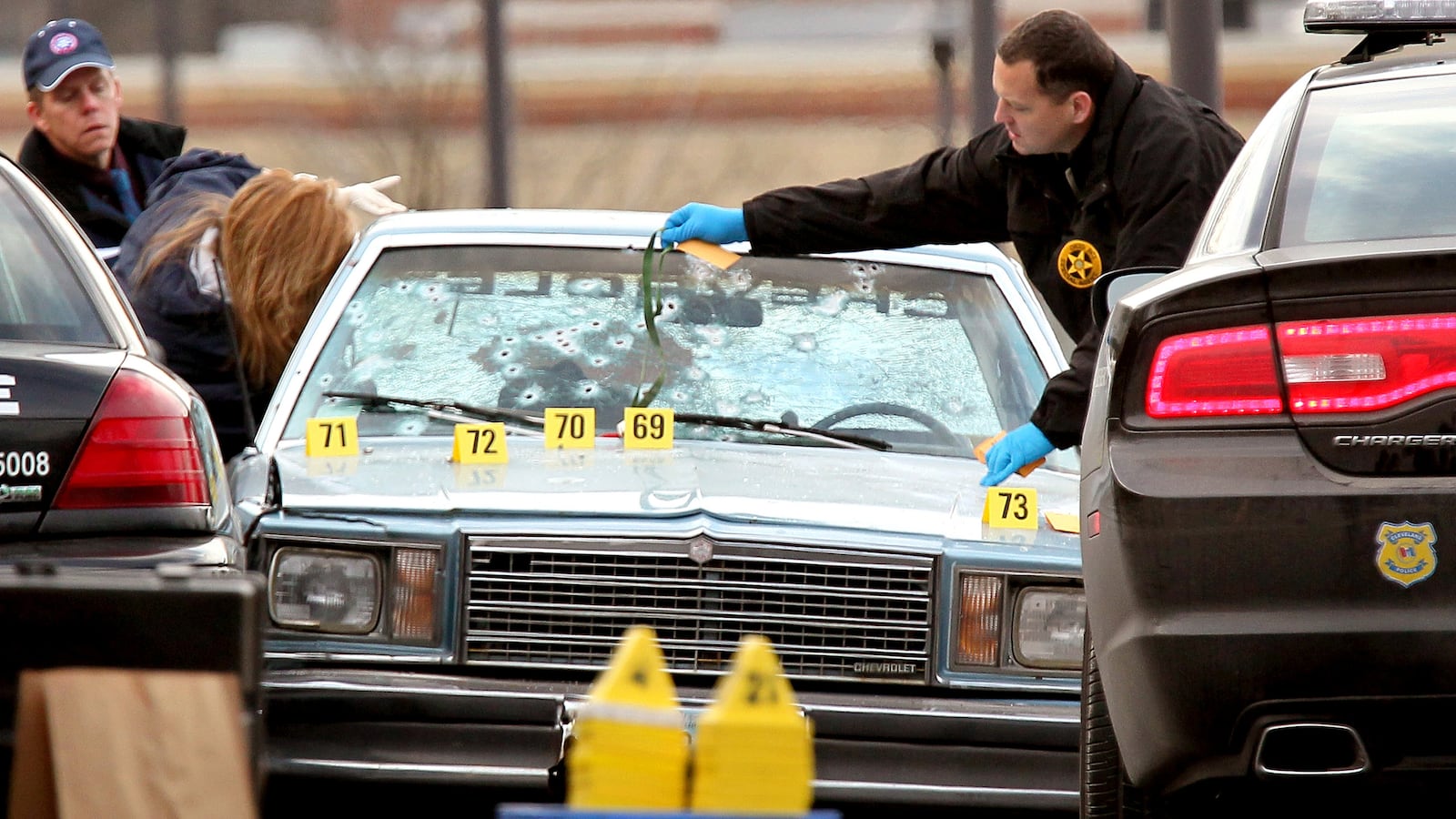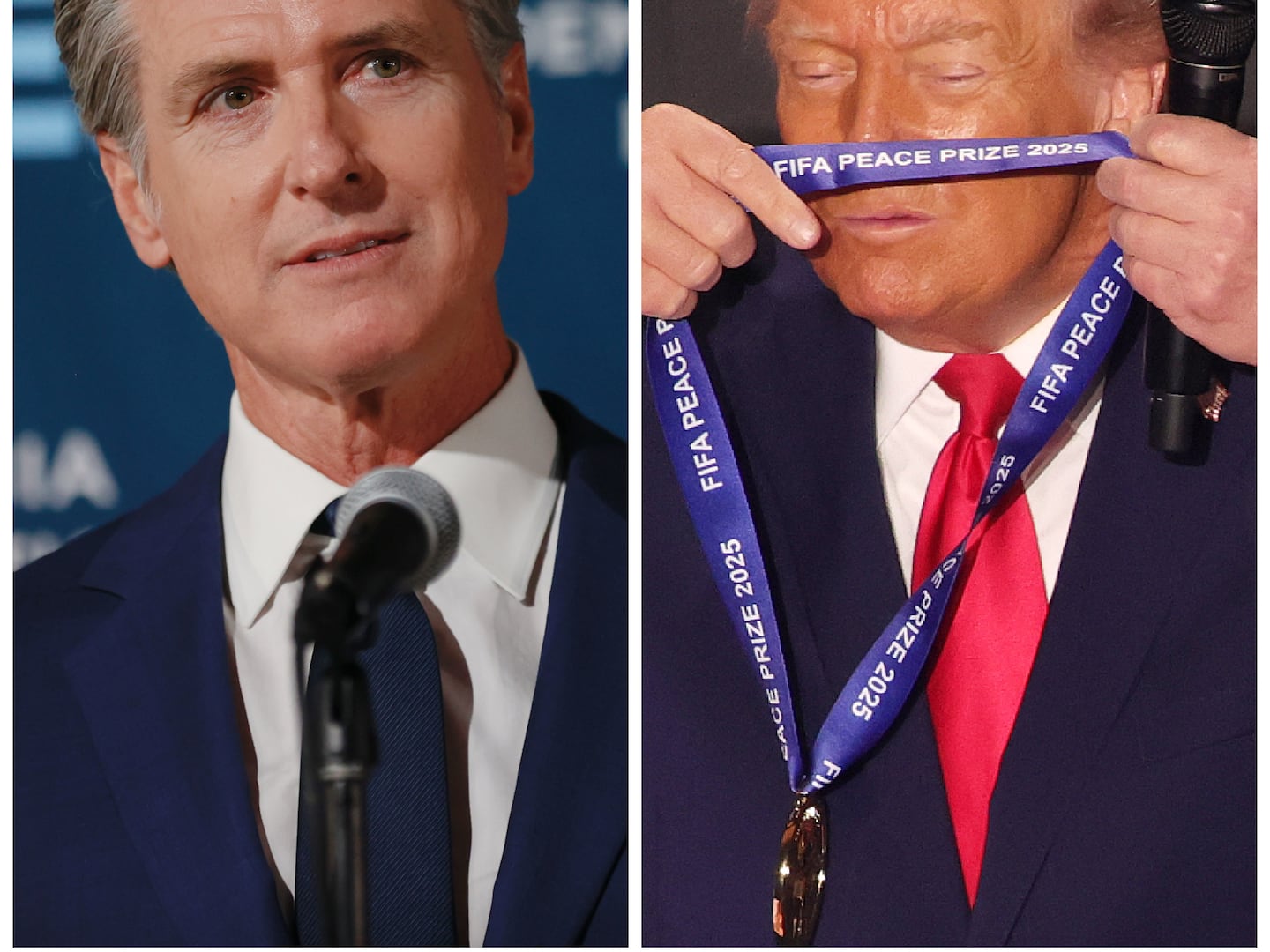The phenomenon is common enough that there’s a name for it: High-Speed Pursuit Syndrome. It’s the “condition” police officers sometimes suffer from during a high-speed chase, when, as an ACLU spokesman once put it, they “get so angry and pumped up, and the adrenaline rush is such that … you see violence visited on suspects at the end of a pursuit.”

Rodney King was a prime example, but it happens all the time, and it rarely makes the national news. Take the Nov. 29 shooting deaths of Timothy Russell and Malissa Williams in Cleveland: After leading police on a 25-minute chase through city streets, Russell found himself surrounded in a dead-end in East Cleveland. Police have said that they opened fire when Russell tried to run one of them over. That version may eventually be tested in court, but what is undisputed is that 13 officers unloaded a total of 137 bullets into Russell’s 1979 Chevy Malibu, killing both him and Williams.
In an interview with The Daily Beast, Williams’s uncle, Walter Jackson, said that 24 bullets had been removed from her body and the damage to her face and torso was extensive. Williams’s mother, Martha Mae Williams, said, “I’m not going to let them close her casket … They’re going to have to look at what the police did to my child.”
High-speed police pursuits have been under increasing scrutiny in recent years: according to a 2010 FBI report, someone dies every day as a result of a police pursuit, and the majority of those pursuits begin with a stop for a traffic violation. The same report found that innocent bystanders constitute 42 percent of those killed or injured in police pursuits.
The pursuit of Russell and Williams started near the downtown Justice Center, after an officer radioed that he thought shots had just been fired from Russell’s vehicle. The coroner’s office has yet to complete gunshot-residue tests to determine if either of the victims had recently fired a weapon, but no gun or shell casings were found in the victims' car or along the chase route. (Russell’s brother, David Russell Jr., said in a video interview that he’d recently given Russell the vehicle and that it had a defective muffler that could have caused it to backfire.)
The investigation by the Ohio Bureau of Criminal Investigation will initially focus on how the pursuit of Russell and Williams played out. On just-released police tapes, the voice of a male senior officer can be heard saying, “No cars have permission to pursue,” followed by a woman’s voice saying, “Fifth District cars, terminate pursuit.” An officer in the pursuit can be heard responding, “Yeah, but this is our patch and we’re going to see what’s going on.”

Under Cleveland police department rules, high-speed pursuits are to be terminated when there exists “sufficient identifying information and high probability of arresting the suspect later.” A dashboard-camera video from one of the vehicles pursuing Russell shows an officer running the plates on the Malibu.
The rules also state that except under special circumstances, no more than two police cruisers are to be involved in a chase. Police union officials are claiming such circumstances existed in this case—specifically, that officers believed they were under fire.
According to a local government official, officers from other jurisdictions were also present at the shooting, but evidently none of them discharged their weapons.
The incident is further complicated by the fact that the victims were both black, and all but one of the officers were white. But Russell also had a history of theft offenses, and on two previous occasions he had fled from police.
Regardless of what happened on that dead-end street, 137 shots is a lot of shots, and like the shootings of Amadou Diallo and Sean Bell, the sheer volume of firepower unleashed on two apparently unarmed people has caused outrage in Cleveland’s minority community. The head of the local NAACP chapter, Hilton Smith, has called for the Department of Justice and the FBI to step into the case.
At a news conference on Dec. 3, Cleveland Mayor Frank Jackson stated his administration would support the 13 officers, provided they were within “the box”—or departmental rules regarding pursuit and use of deadly force. “But if they went outside the box,” Jackson said, “there will be consequences.”






